Getting Intimate with…
Dee Whitnell
March 31, 2023
Interviewed by Laura Clarke
Dee Whitnell (they/he) is a queer-focused sex educator and content creator who founded their Instagram page — @s3xtheorywithdee — during lockdown. Their aim? To provide an inclusive insight into sex, relationships, and identities that young people may not get elsewhere.
In our debut Getting Intimate interview, Dee discusses the barriers that sex educators face when trying to teach inclusively, navigating TERFs on TikTok, and their personal journey with being nonbinary and adopting the term "trans"…
What ignited your passion for sex education? Was there a single moment, or was it more of a gradual path?
It definitely started in my first period education lesson in Year 6. It was so much information to take on, but I wanted to learn everything about it! I was the one that everybody would come to with questions, even though I didn't know a lot. I would talk to my mum to get all of the information I could and then share it with my friends at school.
Then, when I got into secondary school, I was one of the first to have my sexual debut. So I became the person that my friends came to with questions about sex. Fast forward to lockdown, and I started to get really into learning about self-pleasure and toys because I wasn't seeing my partner at the time. I also began questioning my gender identity and sexuality because I was locked away with time for my mind to wander.
I think a lot of people were going through a period of self-exploration at that time.
Yeah, I wanted to learn everything and share what I was learning with other people, but to continue that journey, I wanted to make sure that I was qualified and that I wasn't going to be spreading misinformation or causing anybody any harm. So I sought out sex education courses online and gained a qualification with ACET Esteem. From there, I did my master's degree in Gender & Sexuality, which allowed me to write my dissertation on sex education for trans and nonbinary people.
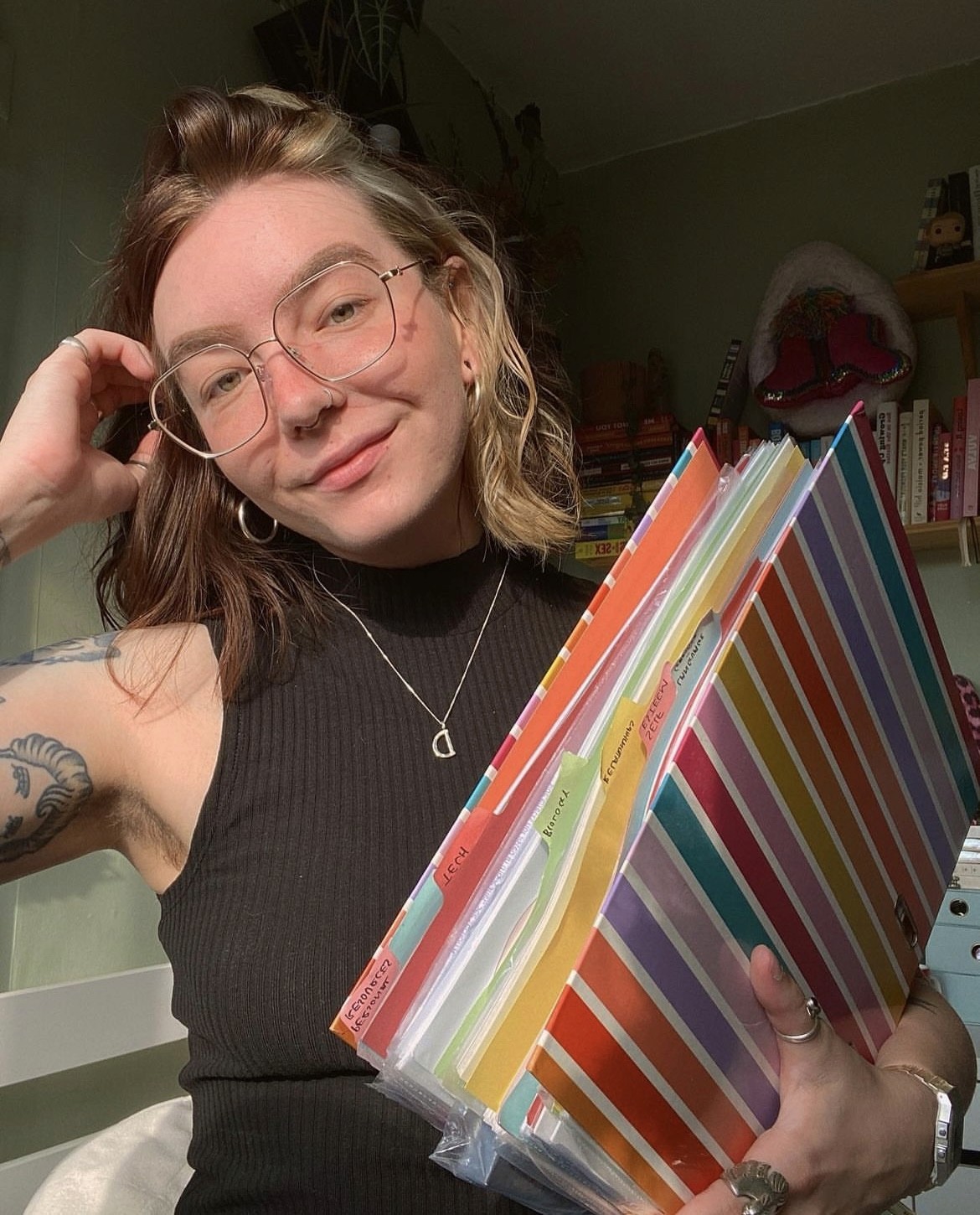
Can you explain the difference between queer-inclusive sex ed and queer-focused sex ed, and why you chose to centre your platform around LGBTQIA+ people and their experiences?
Very simply, it comes from the fact that there aren't many resources out there for queer people. Up until two years ago, LGBTQ+ sex education wasn't a thing in schools, and it was previously banned because of Section 28. I know so many amazing sex educators online who do incredible work on women's sexual health, sex, and self-pleasure. But there wasn't anyone who had a specific queer focus for all queer people — not just gay men, or lesbians, or transgender people — someone who was doing it for everybody. Whatever angle I was talking about, I wanted to make sure that queer people were at the centre of the conversation.
Gender-inclusive language is very important, but it's also important to mention gender sometimes, because for some people, gender is important to them. So creating genderless content is something that I never wanted to do. I wanted it to be gender-inclusive and queer-focused as well.
Do you feel like you noticed an absence of queer-inclusive education when you were growing up?
I didn't know anything about queer sex until I was around 21, and I'm now only 24 — which says a lot! Within my sex education, I received the classic condom on the banana and was told to stay safe.
It was only when I left school that I did my own research and educated myself on queer sex because, even though I'm a queer individual, I've never had sex with somebody who is not AMAB (assigned male at birth). I felt like there was something missing from my knowledge and education. I knew I was queer, but I didn't know the word “queer” existed when I was younger. It was during lockdown that I discovered the term, and fell in love with it. I realised that it described my gender identity, my sexuality, and my expression — so I adopted it. And since then, no label has felt as comfortable.
What do you think is the biggest barrier right now for sex educators who want to provide queer-inclusive RSE to young people?
When I was teaching sex education in school, it was a battle between the parents and the teachers being happy and also following the guidance. At the end of the day, schools want to please parents and make sure they are happy to send their kids to school. When parents complain about LGBTQ+ education, that's more aggravation for the school, and it provokes a conversation around how to teach LGBTQ+ sex education — do we gloss over it? Do we include it in passing? Do we tell students that queer people exist but focus on cisgender and heteronormative sex? It’s a real balancing act for schools.
There is also a lack of training for sex educators on how to teach sex education in a queer-inclusive way. Even if you are qualified in sex education, teaching it from a queer angle is very different, and making sure your language is inclusive is something you need training for. Unfortunately, there aren’t a lot of schools that will pay teachers to do that training.
And now with the new sex education review, there's a lot of discussions taking place about what might happen…
The new review is giving me Section 28 flashbacks. It’s scary — not only is it going to impact the young people who have a right to receive inclusive RSE, but also it's affecting the sex educators who rely on sex ed work to make a living.
It's really difficult, particularly when you've worked in schools and faced the battle of the school telling you what you can and can't teach. But then you're also working with students who say to you, "I need this." I think a lot of people who don't teach sex education don't understand that young people know so much more than we give them credit for — they know what gender is and they know what sexuality is. So sex education is important so that they don't visit unsafe websites to learn these things because they won't be given the correct and accurate information.
You recently spoke on Hannah Witton’s podcast — Doing It! — about masturbation and its relationship to gender. How can masturbation be used as a tool to explore gender in a low-pressure, comfortable environment?
For me, it definitely comes from learning that your body and your sexual organs do not relate to your gender. When I first came out as nonbinary, I was really uncomfortable with my body because I saw it as very gendered — I saw my vulva and my vagina as “female” anatomy. But self-pleasure helped me to see my anatomy as beyond the gender that it is assigned.
During lockdown, I realised that you don't have to have a second party, or multiple parties, involved in your pleasure. When I experienced self-pleasure for the first time, it was scary. I was anxious, and it felt a little bit wrong. But then afterwards I realised that it's my body— it’s completely natural, and if anyone should be pleasuring my body, it should be me.
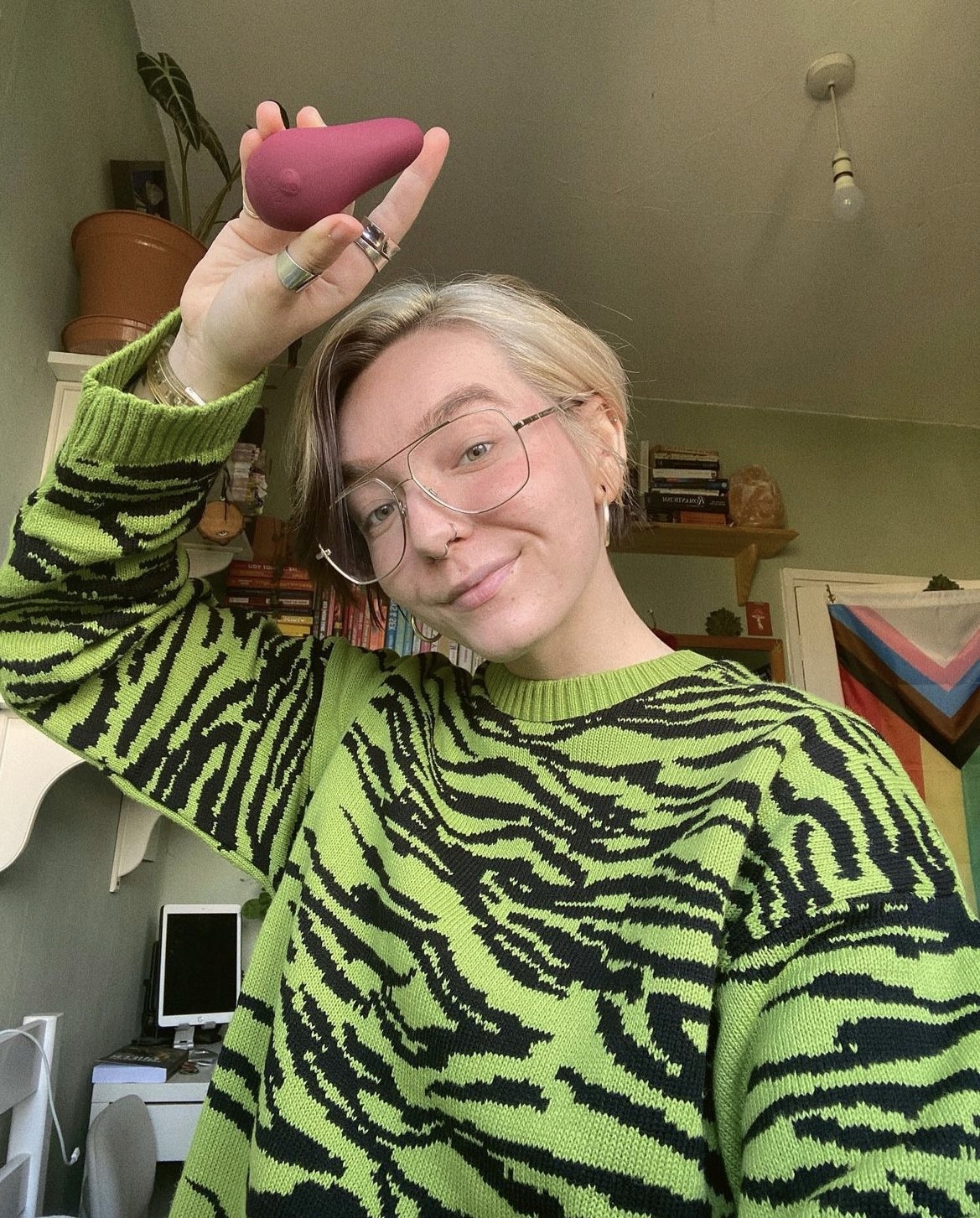
You recently came out as trans after a period of identifying as nonbinary but not using "trans" as a label. Many people will understand nonbinary to be under the trans umbrella — can you talk a little about the potential for disconnect between these two labels and your personal journey with the term "trans"?
Nonbinary does fall under the trans umbrella, but they're also both umbrella terms in themselves. And what term you use is likely to depend on which term you identify with first.
A lot of people believe that transgender and nonbinary should be separate because they believe that transgender means going from one state to another and nonbinary means identifying outside of the binary. However, transgender also means identifying outside of the binary — it's about identifying as something that you weren't assigned at birth, which can include nonbinary, genderfluid, etc.
Unfortunately, transgender and nonbinary people are being isolated from the LGB community, which is why I think the two communities — transgender and nonbinary — have to support one another.
For me personally, I came out first as genderfluid, but after several months I realised that nonbinary actually felt like home — I absolutely fell in love with the term. But I didn't want to use the label “trans” because that felt like a very big jump, and I was a little bit scared of what that meant for me because of the social climate at the moment towards transgender people.
It was only when I got with my partner and felt able to fully express myself as nonbinary and really explore gender-fluidity, androgyny, and masculinity that I realised that I did feel comfortable identifying as trans. That was when I started to try out binders, cut my hair, and changed my name.
So I’m now more than happy to identify as transgender, but for me, nonbinary is my label. It’s like a jumper that is tatty and worn, but it’s just so comfy — it feels like home.
I love that metaphor! Speaking of clothing — you’re a huge advocate for the freedom of gender expression, no matter how you identify. Can you tell me more about your relationship with “masculine” and “feminine” expression as a nonbinary person?
When I first came out as nonbinary, I felt a pressure to express myself in an androgynous or masculine way — to present myself as the opposite of how people knew me previously, which was very femme. I threw out loads of my dresses and makeup and went really hardcore into the androgynous wardrobe and energy.
And my partner at the time said to me, “do you feel any different?” To which I said, “no, not really.” I didn’t really like how I looked, and I didn’t know why. He reminded me that I’m nonbinary regardless of what's on my body and how I present myself. It was like I was trying to validate the fact that I’m nonbinary because I was newly out.
I used to sit on the train and think, “if I cross my legs, do I look femme? If I open my legs, do I look masc? Does my walk look masc? Does my voice sound femme?” I felt like I had to make everything I did androgynous because otherwise people wouldn't see me for who I am.
It's something that I struggle with as somebody who has gender dysphoria and body dysmorphia — expression is something that really affects those parts of my life. If I wake up and I'm struggling to figure out what clothes I want to wear, it can really impact my whole day.
It was only when I started to dabble with mixing femininity and masculinity, and what that means to me, into my wardrobe that I really started to enjoy expressing myself.
I'm also trying to step away from the idea that other people have to perceive me a certain way. I need to try to dress for myself and just make sure that I feel comfortable when I leave the house. Because unfortunately, I will be misgendered regardless. And that's something I kind of use to my benefit — I will do what I want because, sadly, people will probably not see me as who I am anyway. So you've got to dress for you.
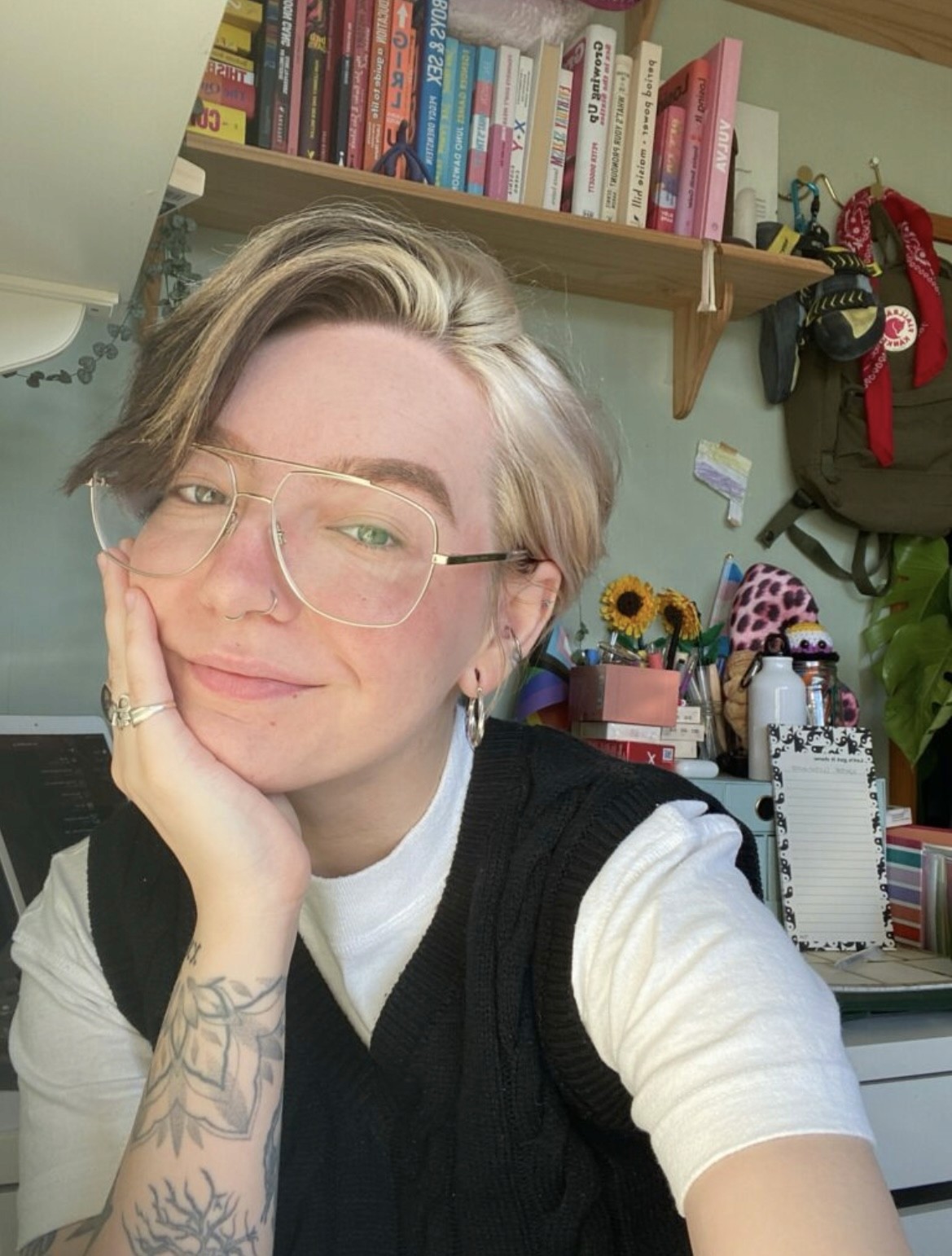
There have been several occasions recently where people with "gender-critical" views have encountered your videos on TikTok, which has resulted in transphobic hate in your comments section. How do you persevere as a content creator and take care of yourself in those moments?
This is a totally new learning curve for me — it’s something that I'm still trying to figure out. At the moment, we are in a trans panic, where people are attacking anything that isn't cis- and hetero-normative.
It's something that I've previously encountered here and there, but not until recently have I experienced it to the point where I’ve opened my phone and there have been hundreds and hundreds of comments attacking me as an individual. That’s where it went from “this is going to help my videos gain traction” to “this is going to impact my mental health”.
My partner was the one who told me to turn off the comments and offered to go through them and report any hate. But I don't like turning off my comments. There are people who need these posts, and I want them to be able to comment and find love and support. However, with certain videos and topics, it is just impossible to keep the comments on. And those topics are pronouns and gender identity. I’m always open to a conversation, but unfortunately these people aren’t, and they don't want to talk about it. They just want to share their beliefs and move on. So for me, I've been, unfortunately, taking comments off of videos.
You’re also protecting the people who find your videos and may check the comments only to find hate.
It's difficult as well when the platforms don’t protect you as a creator or as an educator. I am very keen for Instagram and TikTok to change the way they are towards sex educators and sex workers because, currently, we have to censor ourselves and our content. It's a worry. I know a lot of sex educators don't enjoy the platforms that they're using, but there's no other option. There's nowhere we can go that isn't censored or that has the same amount of people using it.
So we are left using a platform that doesn't support or aid us, making us even more vulnerable. Now more than ever, I see friends on Instagram who are sex workers or sex educators leaving the platform for days or weeks — taking breaks, turning off comments.
Their content is being hidden, or they’ve been shadow-banned because they said a certain word. It’s difficult to be a sex educator right now.
Alongside your work on your own page — @s3xtheorywithdee — you’re also a content creator for PinkNews. In a time where the mainstream press is leading a smear campaign against trans people, why is a platform like PinkNews so important?
It’s important because the people who are creating the content, sharing the information, and writing the articles are nonbinary and trans. I mostly work on editing social videos that cover a lot of the current news relating to the trans panic and LGBTQ+ hate crimes. It can be difficult to do as a trans person, but it’s also really validating that I’m the one who is creating these resources and sharing this information.
Even just working with queer people is something that I absolutely love. And I think that you can see when we are reporting on issues — when we are educating — that there is such a queer focus. Regardless of the topic, a queer person was involved in making that happen.
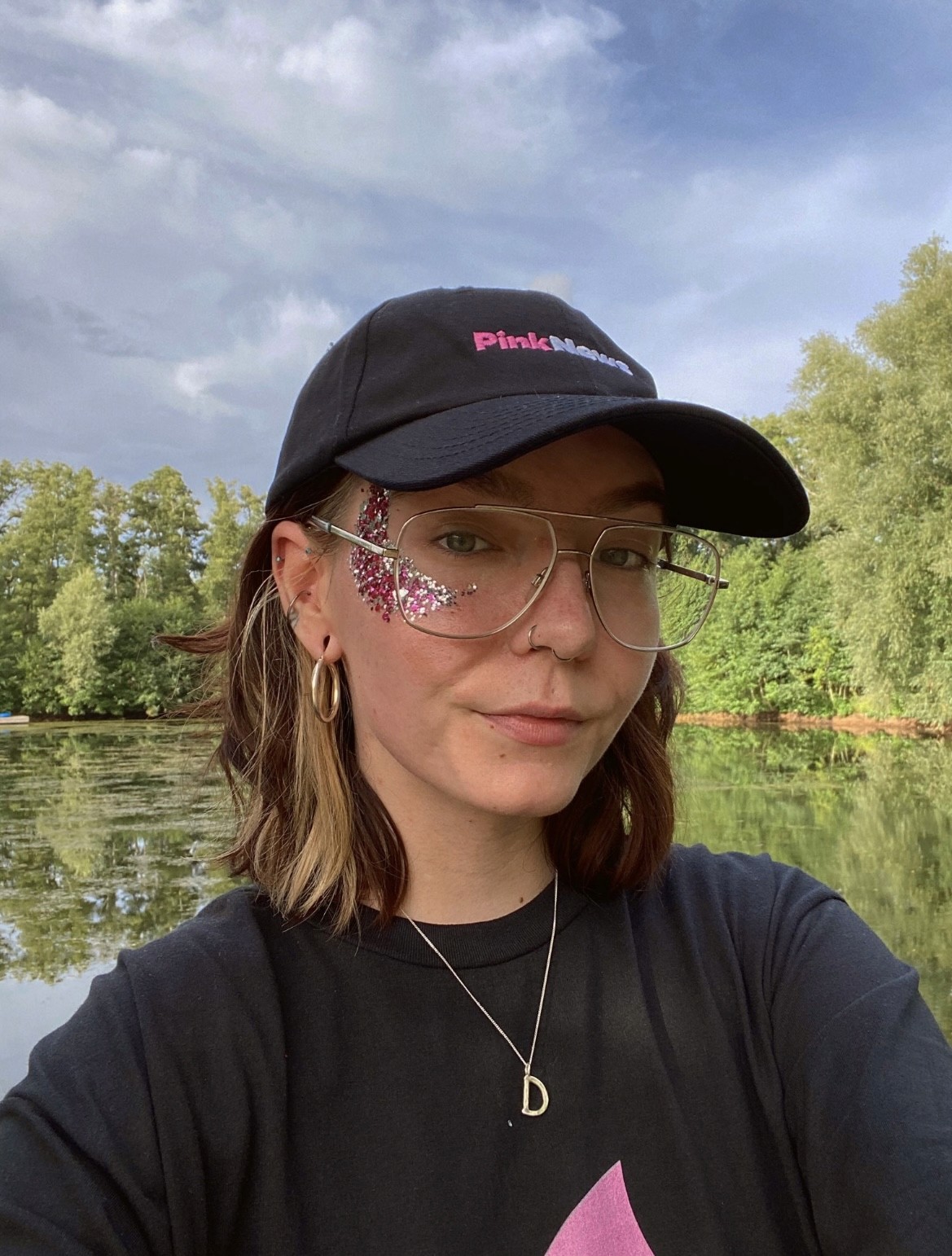
You’re also in the process of writing a book! Who do you hope this book will reach, and what would you like them to take from it?
My audience for this book has always been young LGBTQ+ people, and that comes from working in a school with young LGBTQ+ people who would come to me at break time just to be near a queer teacher.
There are so many resources out there that aren’t accurate, and I've had many conversations with young people where they've said something to me that wasn’t true or is a common misconception, so I wanted to create a book that was accessible to them, particularly if they are transgender and nonbinary. There are no transgender or nonbinary resources for youth education in the UK, which is so dangerous because sex education is a human right. Transgender and nonbinary people need to see themselves in sex education.
But also through writing the book, I realised that adults may read it and discover something they didn't learn in school. I forget sometimes that not everybody knows the basics about sex ed or about identity and gender, so I also want older people to read the book, be gentle with themselves, and use it as a way to heal their inner child.
Hopefully, readers will walk away knowing so much more about their own bodies and their own gender but also about how other people experience gender, sex, and puberty. It’s so important that everybody has a seat at the table of sex education.
I’m so excited to read it when it comes out! One final thing: what was a question you had about sex or gender in your youth, and could you answer it now for anyone who may be wondering the same thing?
I knew nothing about how to have safer queer sex, and I didn't even know that safer queer sex existed. So I guess it was a lack of a question, really! Now I know that barrier methods are so vital for queer sex, including oral sex. There are also hormonal medications, such as PEP and PrEP, that you can take to have safer sex and protect yourself against HIV.
I also didn’t know my anatomy until I was much older. I thought it was just a vagina — an entrance — and that was it. Now I love showing people what their uterus looks like and where their ovaries are. If you ask somebody to label their body, the majority of them will probably not be able to label their anatomy, and that is so damaging.
My friend Sophia Smith Galer recently conducted a study in which she asked young people if they could label a “nubis” on a diagram of the female reproductive system. So many people claimed to be able to label it, but the “nubis” doesn’t actually exist — she made it up.
You should be able to label your sexual organs and know what's going on in your own body for many reasons — for health, for self-pleasure, and for seeking help if anything goes wrong. We learn where our heart is and where our lungs are, but not many of us learn about our sexual organs, and that should be just as much of a priority.
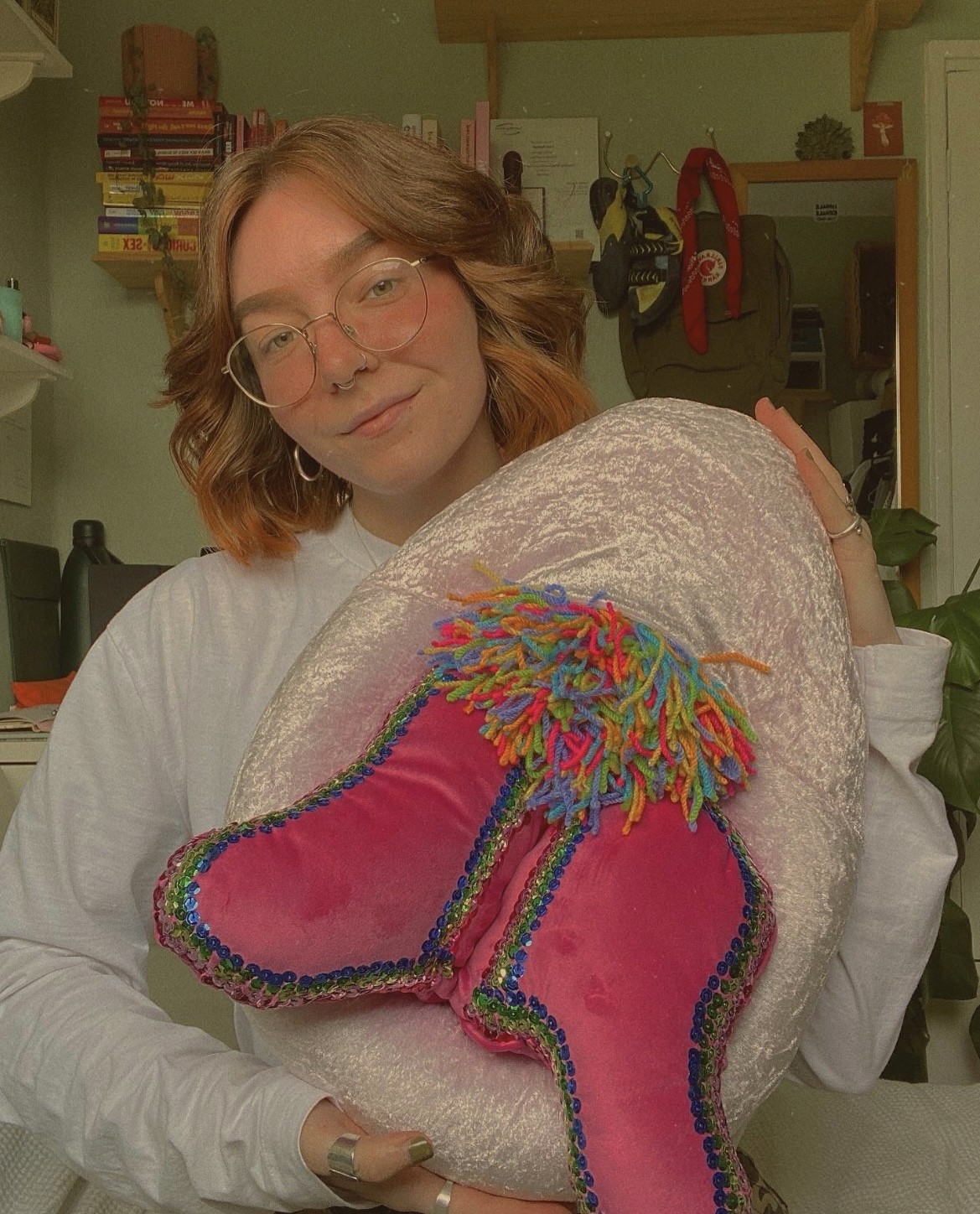
Getting Intimate is the blog series where we interview people making a difference in the world of sex, relationships, gender and feminism.
If you want to see more of Dee's content, you can follow them on Instagram (@s3xtheorywithdee)
For more sex and relationships content, follow My Body & Yours on Instagram (@mybodyandyours)
Interview Date:
March 27, 2023
